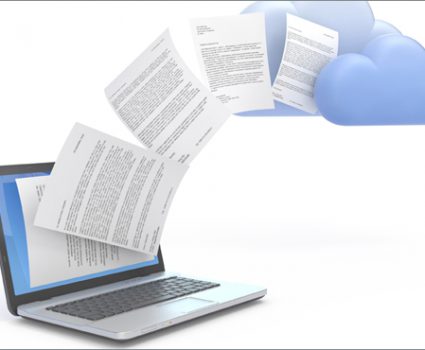
How to prepare your paper records before going electronic – Part 1
We recently outlined several key planning steps before making the move to electronic records.
These steps included understanding your business drivers, setting realistic expectations and laying a solid records management foundation.
In a two-part blog post, we will dive into more detail on what that RM foundation should consist of, and look how to prepare your paper records for the move.
Anatomy of an RM program
Implementing basic records management (RM) best practices is one of the most important things you will do before going electronic. If those elements aren’t in place, then all of your existing challenges of organizing, accessing and managing records will carry over into the new system.
Having a solid foundation for managing your information will also help you create better processes for storing and accessing any physical records after the move to electronic is complete.
Here are four RM program elements that should be in top shape before going electronic:
- A Corporate Records Classification and Retention System: The functional classification scheme allows you to organize records based on business function. A well-constructed classification system takes into account all of the organization’s business activities and the paper and electronic records that surround them.A retention schedule is the flip side of the records classification coin. Whereas the classification establishes categories of records, the retention schedule mandates how long records in each category must be kept in order to meet the legal and operational requirements.
- Records Disposal Policy: A clear disposal policy is the cornerstone of any effective records management program and a huge help in preparing paper records. One of the most important elements of the policy is a statement authorizing secure destruction of non-record and/or transitory materials that are no longer useful.
- Records Disposition Process: When a record has reached the end of its scheduled retention period, it is usually eligible for destruction. All destruction should take place according to a standard, well-documented process. The documentation should address:
- the approval process for destruction
- the methods of destruction for different types of records
- how the destruction will be certified
- how long to retain the proof of destruction.
- Standardization and Centralization: Standardizing and centralizing your paper records helps to create more efficient business processes after the move to electronic. All physical files should be subdivided and labeled according to a standardized descriptor, such as a name, number, or some consistent combination of identifiers. Where possible, it also helps to bring together any disparate collections into one centralized, physical space.
In next week’s post we will look at how to prepare your paper records in advance of going electronic. These steps includes an file inventory, audit, database validation and collection cleanup.
Next Steps
- Can’t wait for next week’s blog post? Download our guide and learn about preparing your paper records for the move to electronic.
- Learn how TAB can help you prepare for electronic records management.
- Talk to us about your electronic conversion: https://www.tab.com/contact/





